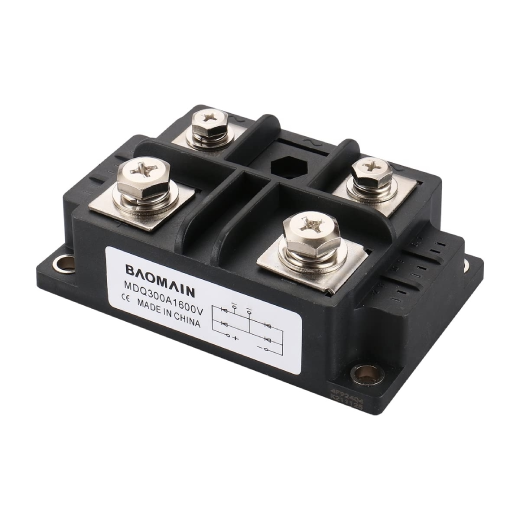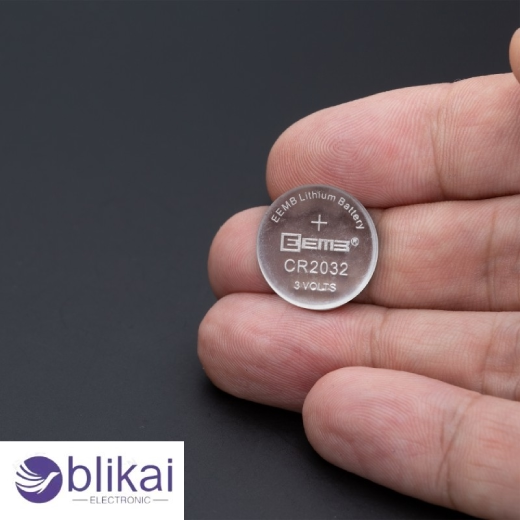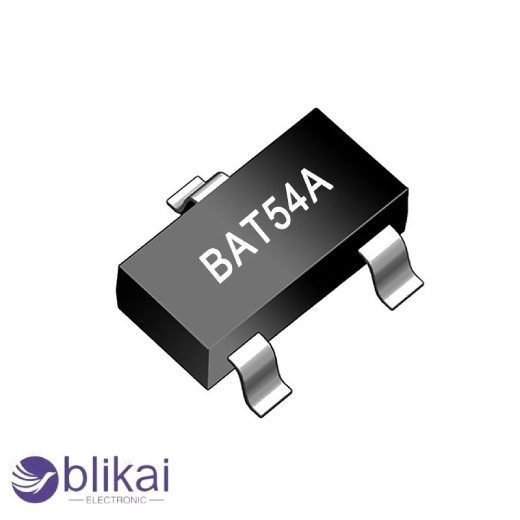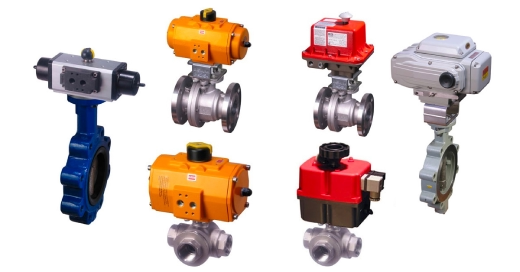
Bridge_Rectifier
Do You Know What a Bridge Rectifier Is?
An electrical component called a bridge rectifier is used to change alternating current (AC) into direct current (DC). Its primary purpose is to correct the AC voltage by permitting current to pass through the load only in one direction. In contrast, a single-diode rectifier only utilizes 50% of the AC circuit. The entire circuit is utilized by the bridge rectifier. As a result, the DC output is less rippled and more smooth. Power supplies, battery chargers, LED drivers, and other electronic equipment that need a steady DC voltage must be powered by this rectification process.
Components and Structure
Four semiconductor diodes coupled in a unique arrangement known as a bridge circuit make up the fundamental building block of a bridge rectifier. Due to silicon’s excellent electrical qualities, these diodes are typically constructed of silicon. Two pairs of diodes placed in a diamond shape make up the bridge circuit. A half-wave rectifier circuit is formed by each pair. The diamond’s diagonal receives the application of the AC input voltage. A bridge rectifier may also have a smoothing resistor and a capacitor in addition to taking the DC output voltage at different angles. boosting the output voltage’s efficiency and stability even more.
Key Secrets Revealed
A. Efficiency Optimization Techniques
Efficiency optimization in bridge rectifiers involves minimizing power losses and maximizing the conversion efficiency. Choosing a diode with a high reverse recovery time and minimal voltage loss is a crucial strategy. By lowering the size of passive parts like transformers and capacitors, high-frequency switching circuits can increase efficiency by reducing conduction loss and switching loss, respectively. when the diode is swapped out for an active switch. Minimizing the voltage drop across the rectifier can further increase efficiency.
B. Common Misconceptions Debunked
The idea that bridge rectifiers always yield a pure DC output is a frequent misunderstanding. The bridge rectifier’s output voltage is still a little bit unstable. This results from the smoothing capacitor’s recurring charging and discharging. The idea that bridge rectifiers can tolerate infinite current and voltage is another common misperception. Even though it has a large power capacity, going beyond the rated voltage and current might lead to overheating and failure. Additionally, some individuals think that because bridge rectifiers are small, heat sinks are unnecessary. However, effective thermal management is necessary in high power applications to guard against overheating and guarantee dependability.
C. Hidden Benefits of Bridge Rectifiers
Beyond their primary function of rectifying AC voltage, bridge rectifiers offer hidden benefits in electronic circuits. One benefit is that it can offer galvanic isolation between the AC input and DC output, which is useful in situations where noise immunity and safety are essential. Bridge rectifiers also have outstanding temperature stability. Because of this, it can be used in a variety of settings. Moreover, it may be integrated into small and affordable electronic systems because of its low cost and tiny size.
Practical Applications
A. Electronics and Electrical Engineering
Bridge rectifiers are used in many different areas of electrical and electronic engineering. This is the point at which AC to DC energy conversion is necessary. It is a crucial part of an electronic device’s power supply. It offers a dependable and steady DC voltage for best performance. In order to efficiently charge the battery, bridge rectifiers also play a crucial part in the battery charging circuit by converting mains AC power to DC power. Bridge rectifiers are utilized in signal modulation and rectifiers in addition to energy conversion. This makes it possible to process analog signals electrically.
B. Industrial and Consumer Applications
In industrial settings, bridge rectifiers are integral to various equipment and machinery requiring DC power for operation. They are commonly used in motor drives, welding machines, and industrial automation systems, where precise control and reliable power conversion are paramount. Bridge rectifiers are crucial in directing AC power from the grid into industrial lighting systems, where precise control and dependable power conversion are important. Bridge rectifiers are used in home appliances like refrigerators and air conditioners, as well as common gadgets like laptop chargers and LED light bulbs, for heating element and electric motor consumers.
Tips for Maximizing Performance
A. Maintenance and Troubleshooting Strategies
To extend a bridge rectifier’s life and maximize its efficiency, regular maintenance is required. Look for overheating indicators on the rectifier, such as discoloration or melted parts. Early detection of potential issues can be beneficial. In order to maintain correct electrical continuity and avoid voltage drops that may impair performance, it is also helpful to inspect for loose connections and broken components. methods for troubleshooting, such as checking the load resistance and voltage across the diodes. Reliability can be increased by preventing overheating and maintaining a clean, dust-free environment. Troubleshooting techniques, such as measuring the voltage between diodes and load resistance, can assist detect broken components and rectify issues quickly.
B. Best Practices for Implementation
Throughout the design and installation phases, following best practices is necessary for the efficient usage of bridge rectifiers. Long-term dependability and overload protection are ensured by choosing the right rectifier model with the right voltage and current rating for the specified application. appropriate methods for managing heat, including the use of fans and heat sinks. In addition to guaranteeing that sufficient isolation and safety mechanisms, like fuses and surge protectors, shield the rectifier and downstream components from voltage variations and overcurrent situations, it also aids in heat dissipation and prevents thermal degradation of components. Optimizing performance and adhering to safety regulations during installation and operation can also be ensured by following industry standards and manufacturer instructions. Engineers and technicians can increase the effectiveness and dependability of bridge rectifiers in a range of applications by following these best practices. Industrial systems to electronics.




